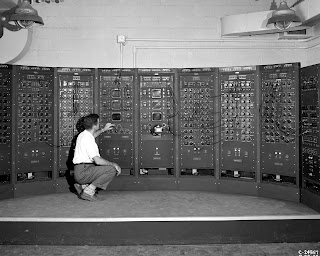Rectifying Error 8909 in a Corrupted SQL Server 2000 Database
 MS SQL Server being a relational database management system (RDBMS) processes huge amount of data at any point of time. For this purpose, it uses the paging technique that involve splitting huge chunks of data into logical and manageable pages. These pages are sequentially related to each other and you can traverse back and forth on them. However, sometimes due to corruption in the database tables the page may not be able to function properly. Corruption happens because of various reasons such as abrupt system shutdown when the database is open, human errors, virus infections, power outages, etc. In such cases, you should take appropriate corrective measures to sort the issue. However, if you are unable to recover SQL table then you should use a third-party SQL Server recovery software to do so.
MS SQL Server being a relational database management system (RDBMS) processes huge amount of data at any point of time. For this purpose, it uses the paging technique that involve splitting huge chunks of data into logical and manageable pages. These pages are sequentially related to each other and you can traverse back and forth on them. However, sometimes due to corruption in the database tables the page may not be able to function properly. Corruption happens because of various reasons such as abrupt system shutdown when the database is open, human errors, virus infections, power outages, etc. In such cases, you should take appropriate corrective measures to sort the issue. However, if you are unable to recover SQL table then you should use a third-party SQL Server recovery software to do so.
Consider a scenario wherein you are working on a database table in SQL Server 2000. You run the DBCC command on the table but it fails to complete. An error message is displayed, that is:
“Table error: Object ID O_ID, index ID I_ID, page ID P_ID1. The PageId in the page header = P_ID2.”
Cause:
The most possible cause of this error message is that the page header for a requested page was found in another page. The other cause is that the database table is corrupt.
Resolution:
To resolve the database table from the aforementioned error message, there are following methods that you can perform:
Look for hardware failure: Run hardware diagnostics and, also, check the error logs to ascertain that this error has occurred due to faulty hardware components. You can also swap the hardware components if you have regular data corruption problems. You can also consider setting up a new hardware system altogether, which will also include reformatting the disk drives.
Restore from backup: If you have an updated and clean backup, then use it replace the corrupted database.
Run DBCC CHECKDB: Run the DBCC CHECKDB command without any repair clause to know the extent of corruption. After determining the extent, run the command again, this time, with the suggested repair clause.
However, if the aforementioned methods do not resolve the issue then you should use a third-party SQL recovery software to perform SQL database recovery. Such read-only tools enable you to recover SQL databases by performing fast yet sophisticated scanning algorithms.
SQL Database Recovery Software is an MS SQL recovery software that you can use to recover corrupted SQL databases created in SQL Server 2000, 2005, and 2008. It is able to recover various database components such as tables, defaults, views, stored procedures, database constraints, etc. This SQL database recovery tool is capable of recovering user-defined data types and functions. It is compatible with Windows 7, Vista, Server 2003, XP, and 2000.
